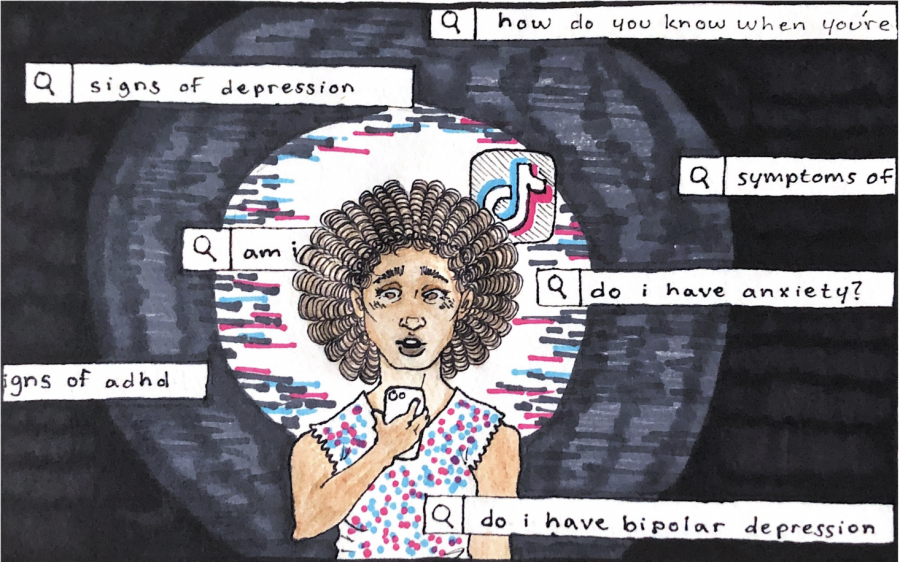Students may utilize self-diagnosis to help understand, cope with own behaviors
July 15, 2021
CW: Mentions of topics surrounding depression, anxiety.
Throughout middle and high school, Eddith Figueroa struggled with depression and anxiety, but with limited resources, she couldn’t get a formal mental health diagnosis. She ended up diagnosing herself to receive the accommodations she knew she needed in school.
“Back then, there wasn’t anybody who was willing to diagnose me since I was so young,” public health fifth year Figueroa said. “They just assumed I was being dramatic or didn’t know what I was talking about.”
Self diagnosis has been a topic of widespread debate on social media apps like TikTok. According to ADDitude, the viral videos, although educational, can also spread stereotypes and increase stigmatization of mental illnesses. Figueroa said students may self-diagnose to explain and cope with their behavior, especially when they don’t have the resources to receive professional help.
When Figueroa first got to UT, she went to the Counseling and Mental Health Center to begin receiving a professional diagnosis and treatment. Figueroa now attends weekly group therapy sessions at the CMHC.
“My journey and relationship with the CMHC has been really good,” Figueroa said. “In my therapy group, there’s a day where you kind of check in and talk about your problems. Then, another day we learn skills based on topics that were brought up earlier that week, like how to manage anxiety or what to do with negative self talk.”
Luxsamee Pajak, an independent artist from San Antonio, said that as a teenager she was originally diagnosed with persistent depressive disorder and generalized anxiety disorder. Since then, she has come to suspect she may have been misdiagnosed.
“My family has a history of ADHD, especially the women,” Pajak said. “I found out through (general) research that people who are assigned female at birth are often misdiagnosed with depression and anxiety when in actuality they have ADHD or ADD. At this point in time I am almost completely positive I have ADHD and not those other ones.”
Pajak said she read about symptoms and personal experiences of people diagnosed with ADHD on social media. She said a lot of what she read resonated with her, which led to her self diagnosis.
Ginny Maril, associate director for clinical service at the CMHC, said she thinks social media can be a helpful, accessible tool for people with limited resources to start thinking about their mental health, but ultimately recommends seeking out professional help.
“This is a way to maybe start putting a name to something or being able to potentially learn more about it,” Maril said. “If somebody recognizes that what they’re hearing is very consistent with how they’re feeling, I would really recommend that somebody speak with a mental health care professional or a medical provider in order to receive an accurate diagnosis.”
Maril said the Counseling and Mental Health Center provides free mental health resources to UT students, faculty and staff. Figeroa said while CMHC resources helped her, for those without access to resources such as the CMHC or therapy, self diagnosis may be their only option.
“At the end of the day, we all just want to understand ourselves and make sense of how we experience the world,” Figueroa said. “Sometimes I think self diagnosing is really the only shot people have at achieving that.”



